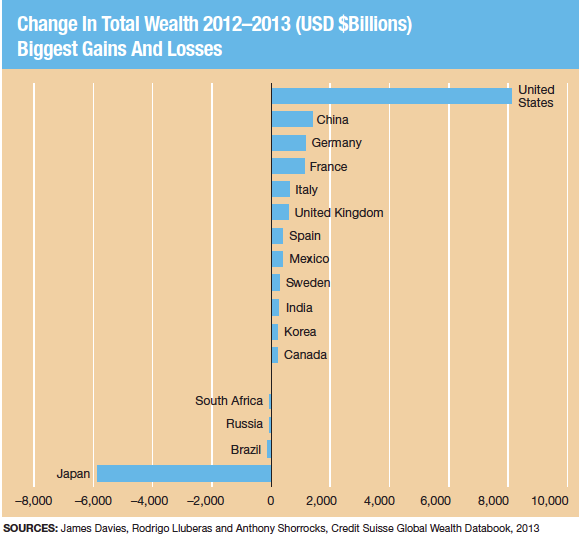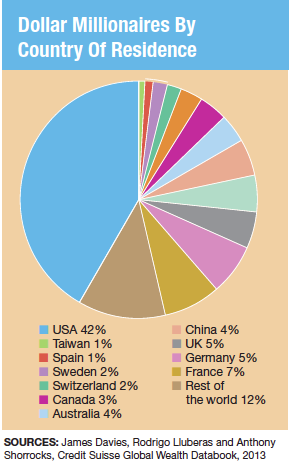The world has gotten richer … at least for some people. According to the 2013 Credit Suisse Wealth Report, global wealth has hit an all-time record of $241 trillion in U.S. dollars (all subsequent figures are in U.S. dollars), which is a 4.9% gain over the prior year and more than double since 2000. That comes to $51,600 per person, a figure that might seem like a cruel hoax to the tens of millions of people with limited means––or worse.
Indeed, the report notes that inequality remains high, with the top 10% of the world population owning 86% of global wealth, compared to barely 1% for the bottom half of all adults. Credit Suisse estimates more than 3.2 billion individuals, or more than two-thirds of the planet’s adults, have less than $10,000 in wealth.
Not surprisingly, the richest nations are in North America, Western Europe, the Asia-Pacific region and the Middle East. Switzerland tops the list with a wealth-per-adult amount of $513,000. That’s followed by Australia ($403,000), Norway ($380,000) and Luxembourg ($315,000). The United States, Sweden, France, Singapore, Belgium and Denmark round out the top 10, with the average wealth per adult in the $250,000-to-$300,000 range.
The wealth rankings look different when the median wealth per adult is calculated, because it favors countries with lower levels of wealth inequality. By that reckoning, Australia finishes first with $220,000, followed by Luxembourg ($183,000). The rest of the top 10 are Belgium, France, Italy, the U.K. and Japan (between $110,000 and $150,000) and Switzerland, Finland and Norway (in the $95,000 area). The U.S. is further down the list at $45,000.
In its report, Credit Suisse said it expects global wealth to rise nearly 40% over the next five years, reaching $334 trillion by 2018. Emerging markets are forecast to comprise 29% of that growth, with China accounting for almost half of the increase among those emerging markets. Wealth generation is expected to come mainly from growth in the middle segment, but the number of millionaires should also jump considerably over the next five years.
